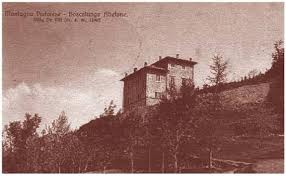Villa De Viti

It was built among the trees, above the hamlet of Cecchetto, in the first decade of the 1900s by the De Viti marquises who resided in Rome. Before then, the De Vitis had come to Abetone for a few years on holiday, renting Villa La Roccia from June to October. Their mountain residence was constantly frequented by Italian and foreign nobles and also by a historical figure, Umberto Zanotti Bianco (1889-1963), a man of great culture and humanity, archaeologist, southerner and environmentalist, who, as some Abetone residents remember, when he came to Abetone was constantly watched by two plainclothes officers, because he was against the fascist regime. After the Second World War, the “villa” was inhabited, always in the summer, by one of the marquis’s three daughters, Lucia. After her husband’s death, the noblewoman devoted herself to caring for polio-stricken children; took them on holiday to Abetone, where they studied, painted with watercolours and underwent the first homeopathic treatments of which the marquise was a fervent supporter. A tennis court was set up near the villa. This philanthropic behaviour of the marquise can certainly also be traced back to the visits that Zanotti Bianco had made to his family years before. In fact, he fled to Belgium for his anti-fascist ideas, and founded the National Association for the interests of the South; he also became a confidant of Queen Maria Josè of Savoy (who put him in contact with many cultural figures, some of whom were frowned upon by the government entourage), who renamed the Association “Opera Principessa di Piemonte” to prevent the regime from closing it down. After the end of the war, Zanotti Bianco was rehabilitated. He was given many prestigious positions: he became President of the Italian Red Cross, Academician of the High Schools and also President of Italia Nostra. In 1952 he was appointed Senator for life by the President of the Republic L. Einaudi, for his very high scientific and social merits. Returning to the "villa", which now belongs to the "Le Costantine" Foundation (based in Casamassella, in the province of Lecce), we must note that it is currently in a serious state of abandonment. In 1943, during the Second World War, the German Command settled there; in the village many still remember the imposing figure of Marshal Kesserling. Via Brennero (formerly Via Ximenes), 19 51021 Abetone

 Italiano
Italiano